PROTECT YOUR DNA WITH QUANTUM TECHNOLOGY
Orgo-Life the new way to the future Advertising by AdpathwayAsters are the stars of the fall garden, blanketing the autumnal display in jewel tones of blue and purple. The nectar-rich flowers offer late-season resources for pollinators ahead of winter.
‘October Skies’ asters are an aromatic variety with a violet cloud of flowers from August to October. Dense, leafy stems maintain a low, shrubby form. Easy-care and drought-tolerant, the late-season blooms of ‘October Skies’ asters draw a number of beneficial insects while making a gorgeous seasonal bloomer.
‘October Skies’ is a low-growing perennial that blends fall color with ecological benefits, showy in drifts or dotted throughout the bed. They’re a fit for the perennial border, butterfly, woodland, naturalized, rockery, and cottage garden. Use them in mass plantings, prairies, and ecological restoration areas to harness their durability.
‘October Skies’ Aster Overview
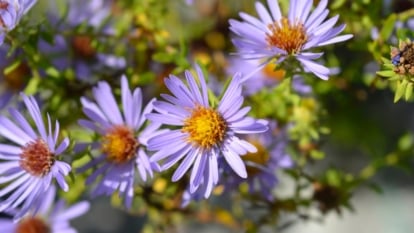
|
Plant Type Herbaceous perennial Family Asteraceae Genus Symphyotrichum Species oblongifolium |
Native Area Garden origin/species to Central and Eastern U.S. Exposure Full sun to partial shade Height 1-2’ Watering Requirements Average |
Pests and Diseases Powdery mildew Maintenance Low Soil Type Average Hardiness Zone 3-8 |
What are ‘October Skies’ Asters?
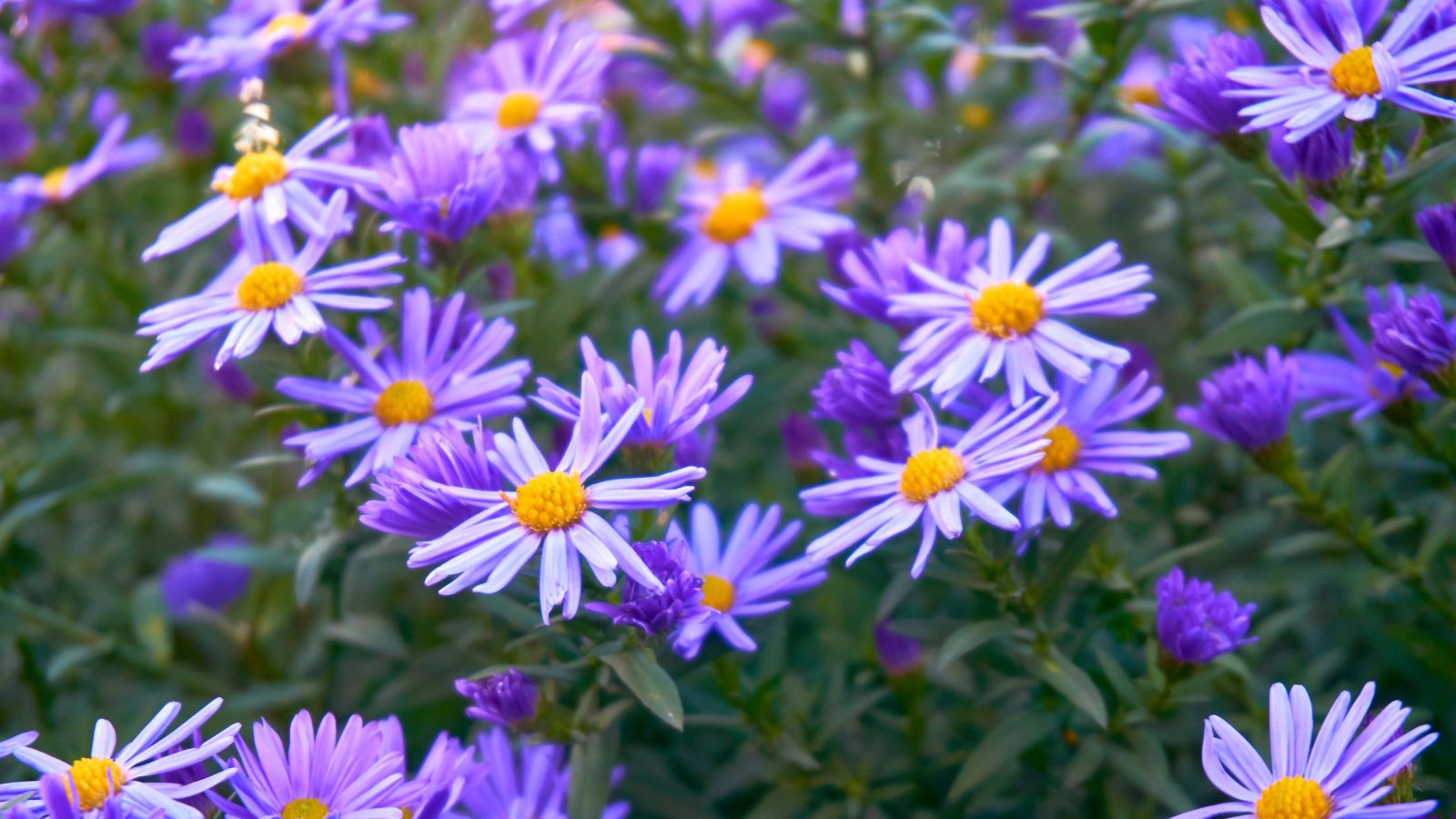 The flowers sport long blue petals radiating from the yellow center.
The flowers sport long blue petals radiating from the yellow center. Asters, many native to North America, are easy-going garden mainstays with daisy-like flowers that put on a showy display well into fall. There are over 250 species of asters worldwide, and S. oblongifolium has violet-blue flowers that emerge in August and September through November on dense, leafy forms. Commonly called aromatic aster, crushed leaves are fragrant as they release essential oils.
‘October Skies’ asters are a late-season aster for staggered color and resources that last until frost. The cultivar is a selection of aromatic asters with dark sky blue petals that fan around a contrasting central yellow disc. Rich with pollen and nectar, the late-season bloom provides food for native bees and other beneficial insects. It also supports late migratory butterflies like monarchs as they travel to warmer climes.
A North Dakota State University study evaluated pollinator preferences among select native perennials and their cultivars and found ‘October Skies’ to be high on the preference list for hoverflies and bees. Hoverflies are natural predators of common garden pests, helpful in controlling aphid populations. ‘October Skies’ was one of the biggest draws for pollinators.
‘October Skies’ make excellent accents and filler specimens in the border and in containers. Increasingly, asters are becoming substitutes for the omnipresent fall mum, with richer pollen and nectar offerings and seasons of recurrent color. ‘October Skies’ asters also make beautiful cut flowers.
Pair asters with other fall-flowering perennials like rudbeckia, echinacea, solidago, and sedum. ‘October Skies’ is vibrant among ornamental grasses for contrast in foliage and form. Hydrangea, drying in vintage tones on the stem, makes a lovely backdrop.
Characteristics
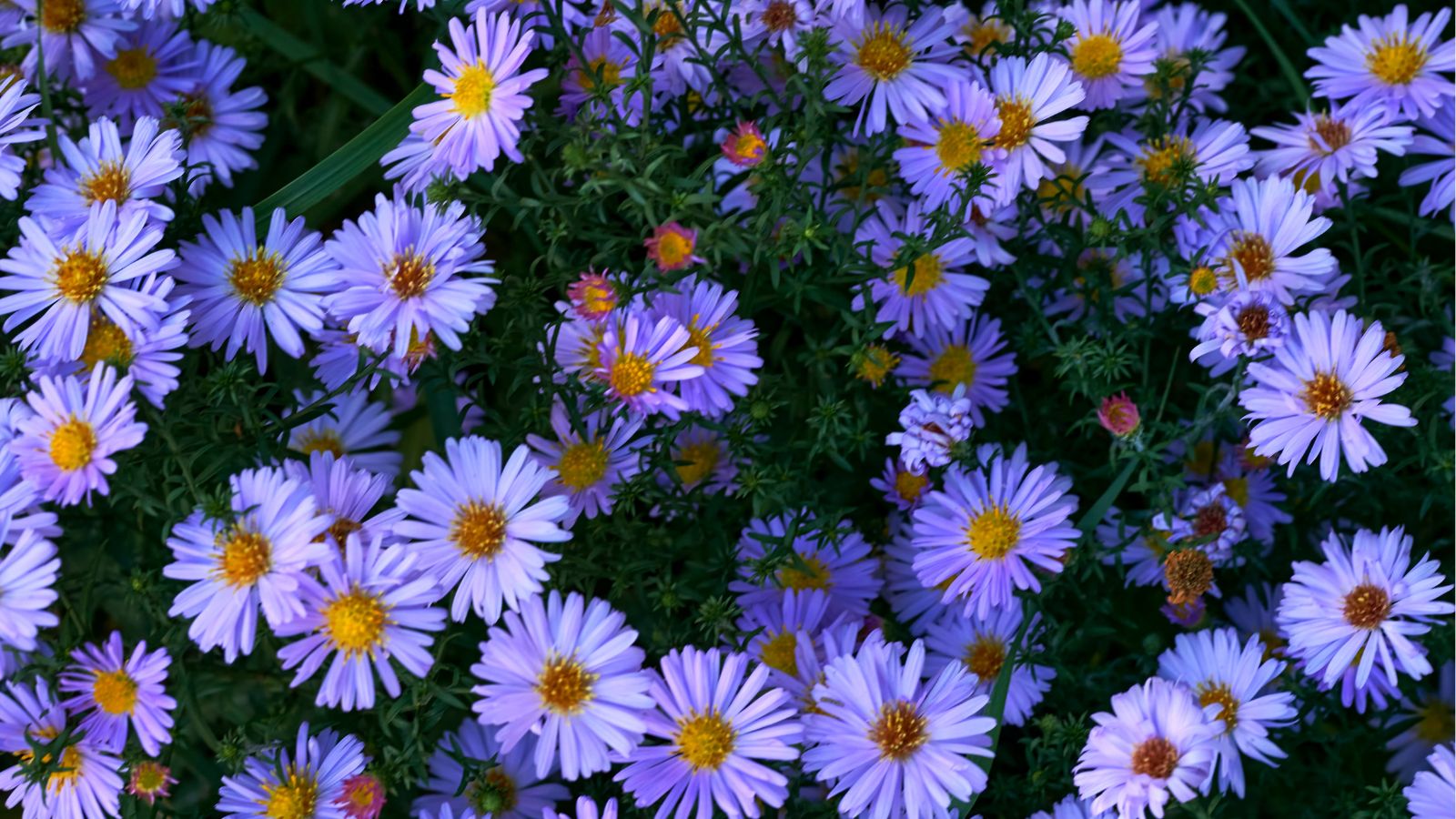 After planting, they grow quickly to fill gaps.
After planting, they grow quickly to fill gaps. ‘October Skies’ asters grow vigorously with branches that support themselves in a coarse, compact, and mounding habit. With a height of two feet and a spread up to three feet wide, they are incredibly versatile.
Bushy, stiff, and low-growing, ‘October Skies’ has a leafy habit with less reseeding and spreading than the straight species. Whirls of one-inch daisy blooms appear in profusion in August and into fall, creating an infusion of color with slender blue-purple petals and yellow disc.
Leaves are blue-green, aromatic, and sticky, making them unappealing to some garden pests, including deer and rabbits. ‘October Skies’ asters are also disease-resistant.
In the winter, the herbaceous perennials enter dormancy. Leave them standing instead of cutting them back (or cut them 12 to 24 inches tall). Their stems host hollow-stem nesting bees to overwinter.
Native Area
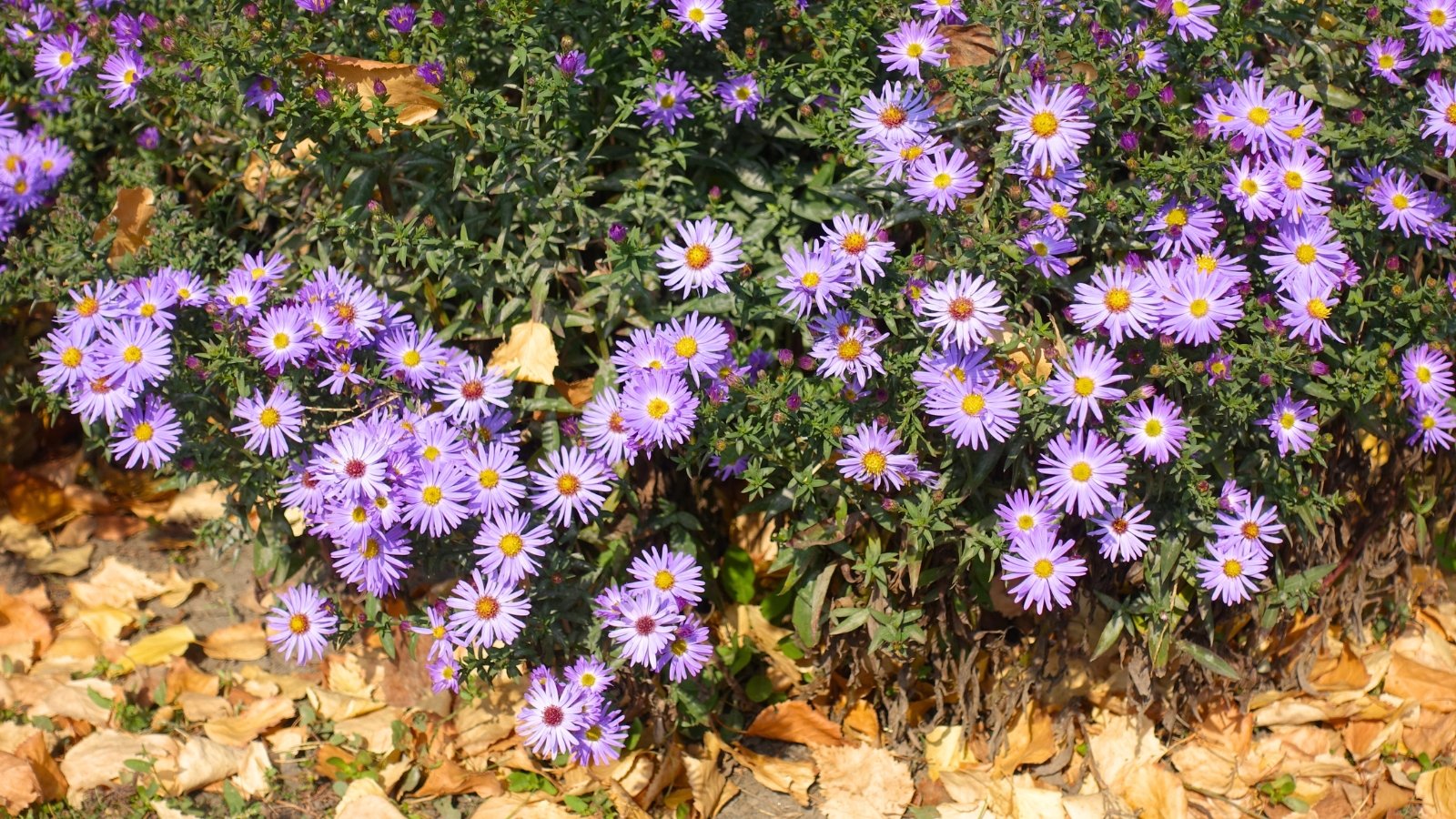 The species is native to the United States.
The species is native to the United States. S. oblongifolium is native to the Central and Eastern regions of the U.S., with a natural habitat of open glades, prairies, rock outcrops, dry woodlands, and slopes.
The species is hardy across USDA zones 3 through 8, with good heat and cold tolerance in wide-ranging growing situations. ‘October Skies’ asters grow best in these zones.
Planting
Spring and fall are optimal for planting S. oblongifolium. The mild seasonal conditions allow roots to develop before summer or winter extremes. Space aromatic asters 18 to 24 inches apart to allow ample air circulation while presenting a dense display of the multi-branched stems.
Transplanting
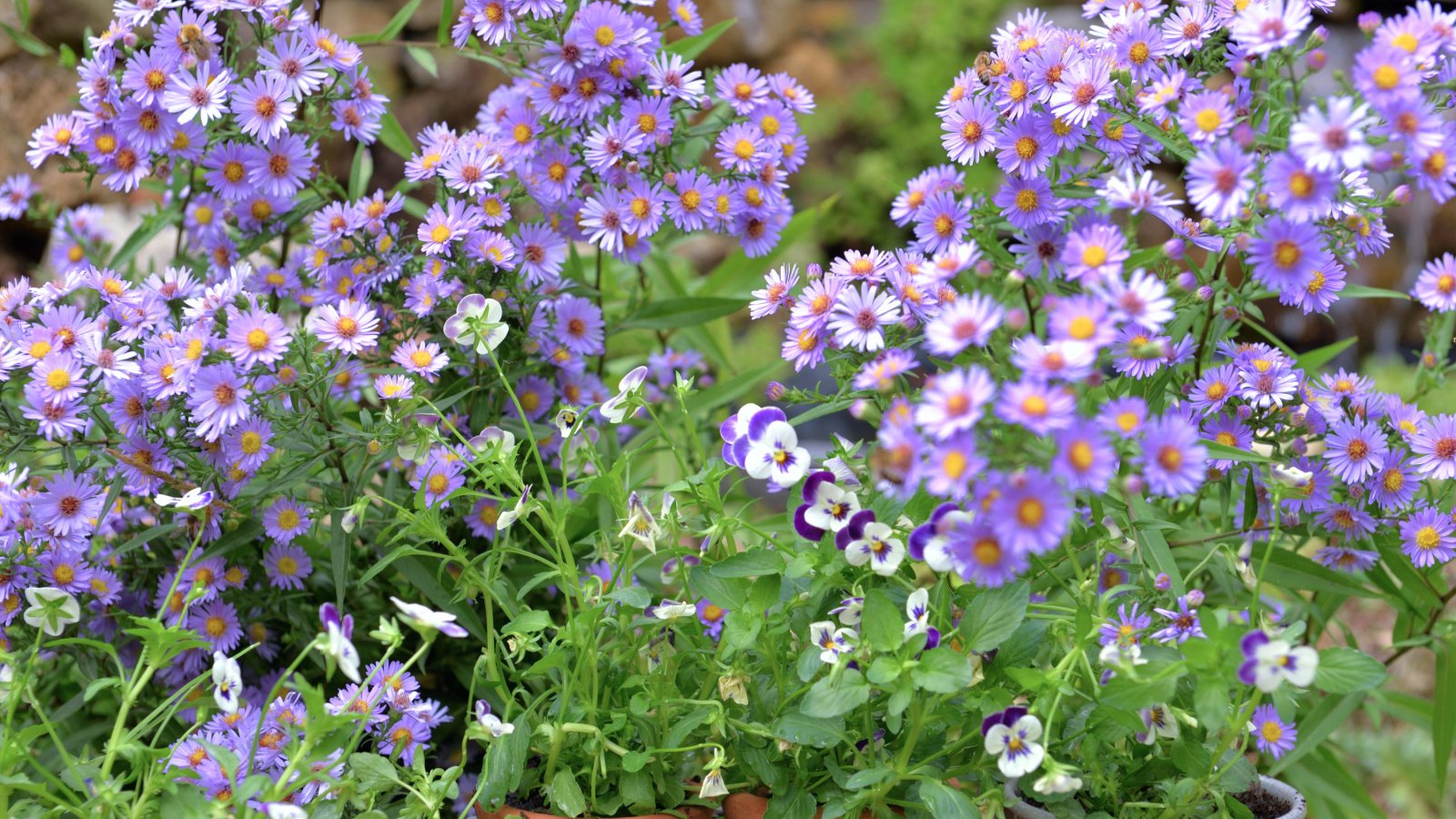 Buds develop in summer and open in fall.
Buds develop in summer and open in fall. ‘October Skies’ asters are vigorous among the species and develop quickly in warm weather. Buds develop over the summer, triggered by shorter daylengths and cool temperatures to flower.
Start with nursery specimens of the cultivar and dig a hole twice the size of the potted root ball. Plant the aster at the same level it was in the pot for crown health. Water deeply to saturate the surrounding soils.
‘October Skies’ asters propagate easily via division. Take divisions in spring and situate young transplants in a prepped site. Water well for root establishment.
How to Grow
Symphyotrichum grows across climates, soil types, and sun exposures, making it versatile and easy to use in the landscape. They benefit from average moisture and full sun for best growth and flowering, but adapt to dry conditions and less sun.
Light
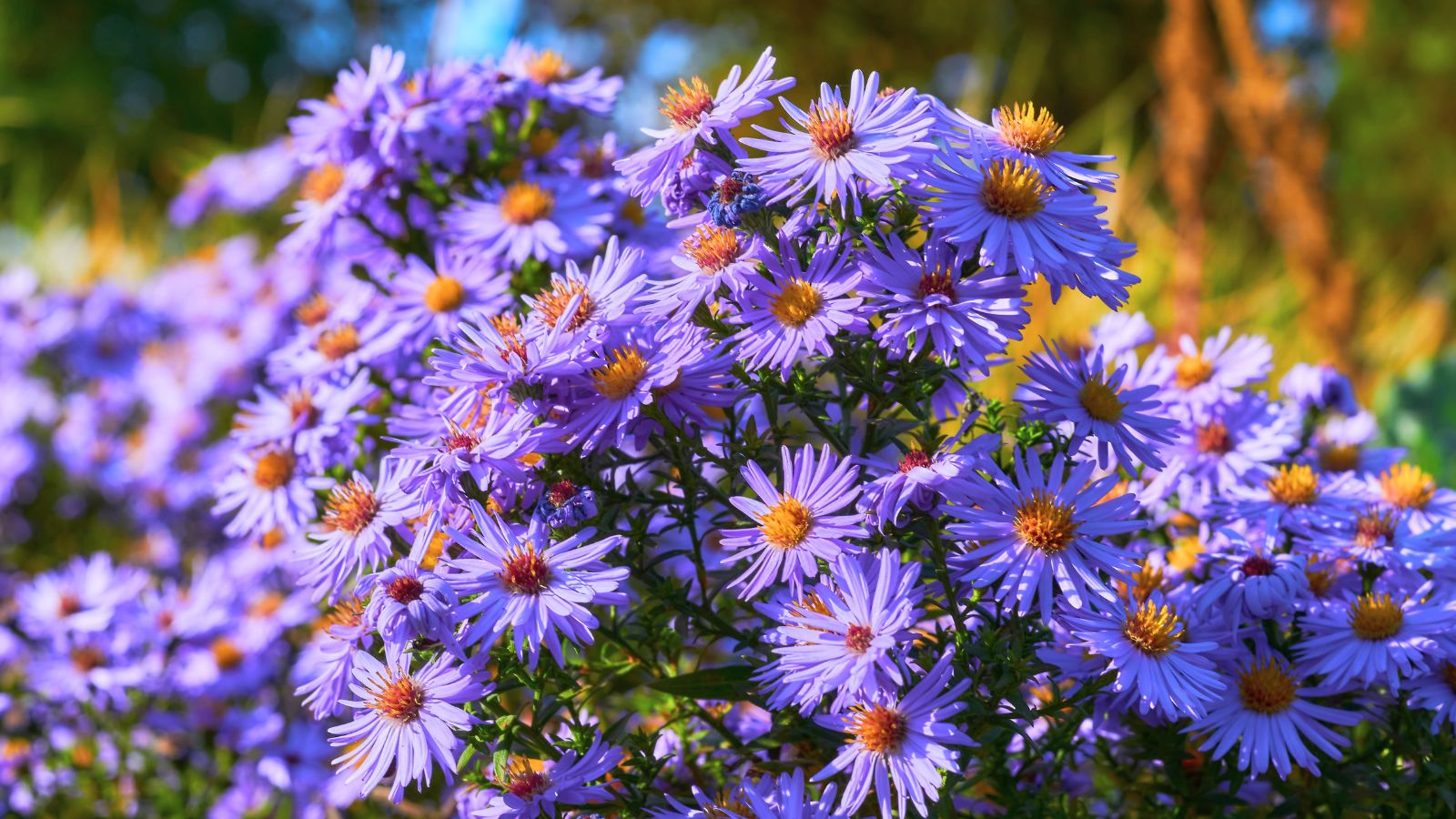 Full sun is recommended for strong flowering.
Full sun is recommended for strong flowering. ‘October Skies’ performs best in full sun, with six or more hours of sunlight daily. It tolerates partial shade (about four or more hours), especially in areas with intense afternoon rays.
The reliable cultivar flowers well even with some shade. In too much shade, flowering will be less, with slower growth and less vigor.
Water
 Water consistently, especially during hot weather.
Water consistently, especially during hot weather. ‘October Skies’ asters show the best color with average moisture during the growing season. Consistent moisture ensures overall health and a profusion of blooms, though the perennials are drought-tolerant once established. They withstand dry to moist soils as long as the soils are well-draining.
Aromatic asters grow naturally in average to dry sites. They won’t withstand prolonged saturation. Avoid overly wet conditions, as soggy roots lead to weakness and potential fungal diseases like powdery mildew.
Soil
 Well-draining soil is essential to avoid rot.
Well-draining soil is essential to avoid rot. Loose, sandy, loamy soils are best for the flowering perennial. It adapts to a wide range of types and textures as long as they’re well-draining. Good drainage is essential for roots to thrive, and ample airflow.
The tough cultivar tolerates sandy and clay compositions and is a good selection for eroded or dry, rocky areas. At planting, topdress with compost over the entire area, especially in poor soils like clay and sand. The organic material improves aeration, moisture retention, drainage, and nutrition.
Temperature and Humidity
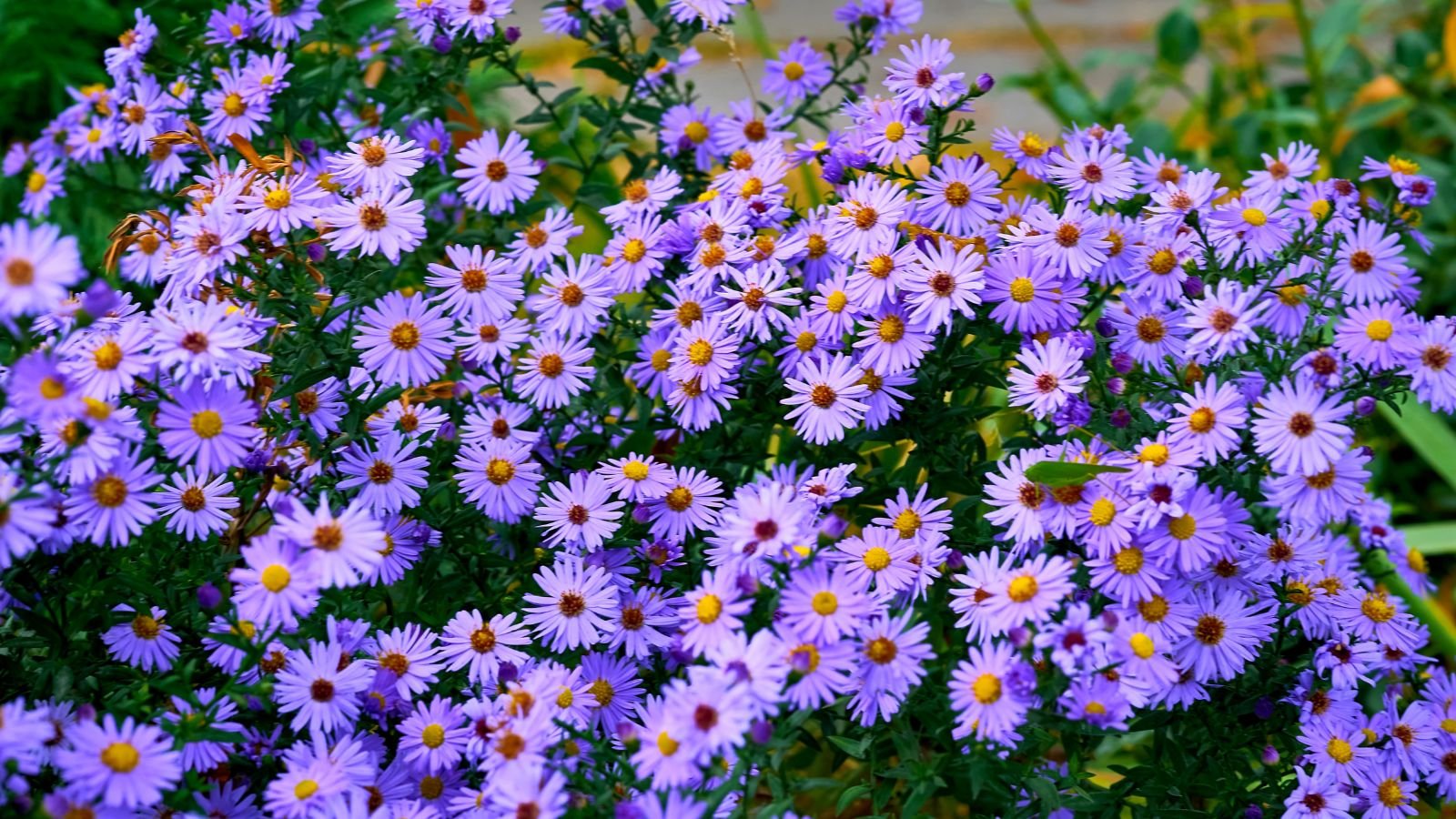 October Skies asters are adaptable and grow in a range of climates.
October Skies asters are adaptable and grow in a range of climates. This durable wildflower tolerates moderate heat and humidity up to zone 8, as well as cold winters in zone 3.
Provide proper spacing for good air circulation in climates with humid summers to prevent mildew problems. Prune surrounding plants if they encroach on the asters to allow beneficial space for airflow.
Fertilizing
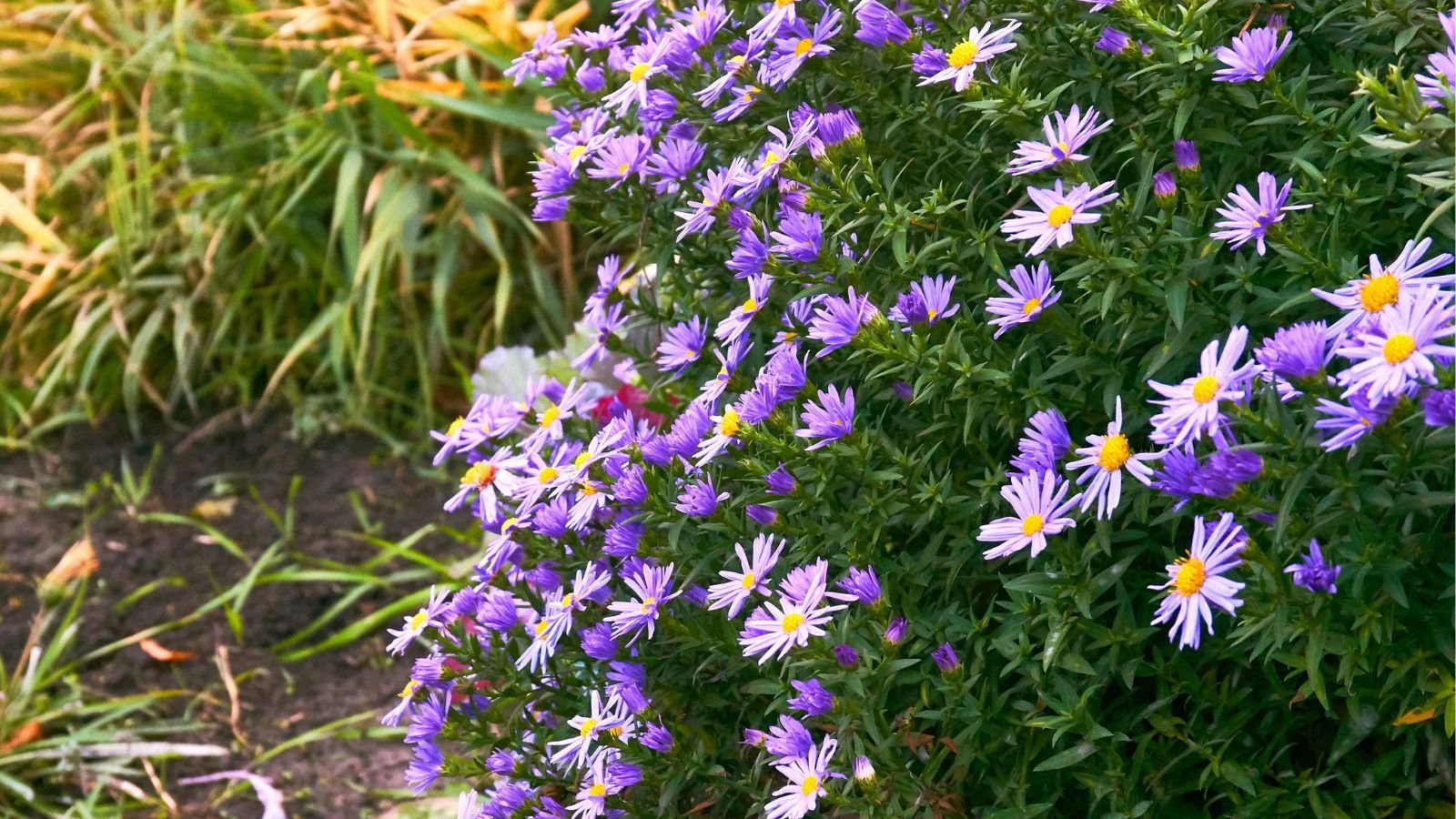 These low-maintenance plants don’t require feeding.
These low-maintenance plants don’t require feeding. Aside from compost to boost nutrition and drainage in lean or dense soils, there’s no need for additional fertilizer for these asters to flourish.
Maintenance
 Look out for common garden diseases.
Look out for common garden diseases. The low-maintenance perennials need little maintenance throughout the season. As vigorous selections, they benefit from dividing every few years to reinvigorate growth. If the crown becomes crowded and declines over time, divide to foster fresh transplants.
Asters have few growing problems, but are susceptible to powdery mildew and rust diseases. Ensure plenty of air circulation and thin stems in summer if crowding inhibits airflow. Thinning, along with good soil drainage, helps prevent foliar diseases.
Asters don’t require deadheading unless to limit reseeding. Because ‘October Skies’ is a selection of the straight species, seeds won’t come true to type. Seeds that germinate won’t necessarily reflect characteristics of the parent plant. To prevent reseeding, cut back stems as flowers fade and before seeds ripen and disperse.
Propagation
Division is an easy way to expand the collection and benefit the colony every few years. To divide ‘October Skies’ asters, wait until after spring’s final frost and as new growth emerges. The new transplants will be tender, and avoiding any late-season, bounce-back frosts gives them the strongest start.
Division
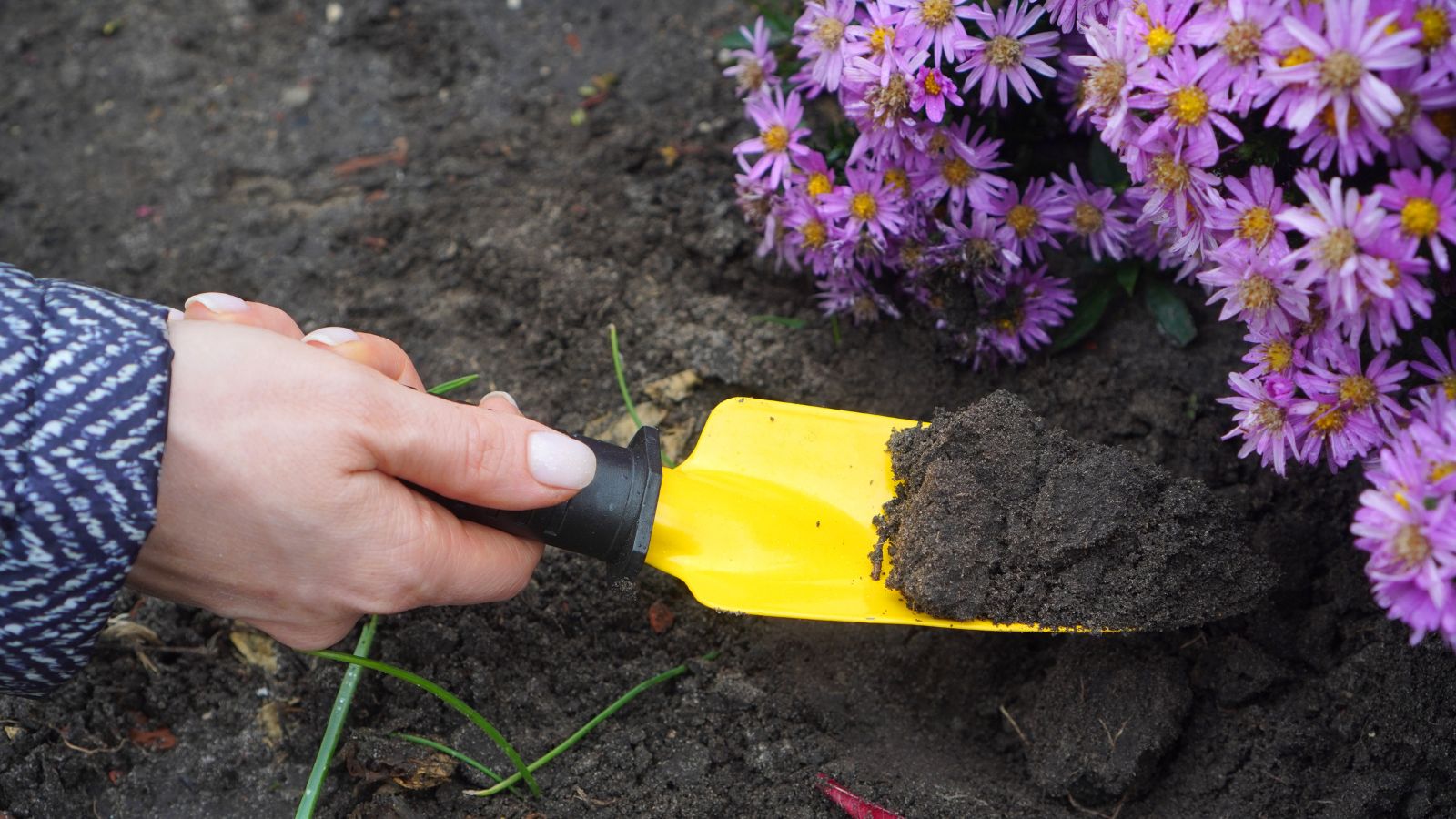 Divide plants in spring to propagate.
Divide plants in spring to propagate. Roots and shoots develop most quickly in warming temperatures in spring. Use new growth as an indicator, dividing when stems reach several inches tall.
Make the divisions with a spade or digging fork, digging a wide berth around the main crown or entire clump. The goal is to lift the whole aster out of the soil, capturing as many intact roots as possible. Loosen the roots and gently shake off excess soil.
With a sharp knife, pruners, or spade, separate the clump or core into sections. You may be able to tease them free by hand. Each segment should have three to five viable stems with roots attached. Every workable segment becomes a new aster to transplant.
It’s easiest to start from the outside working in, as fresh growth occurs mostly on the perimeter of established plants. After separating the existing plant into sections, determine if the central crown of the mother plant is worth replanting. If the crown is dense with woody stems and shows less growth and flowering, compost the old portion and focus on replanting the next generation.
Common Problems
‘October Skies’ asters don’t have many pest or disease issues. The fungal disease powdery mildew may be an issue in cool, humid weather.
Diseases
 Mildew leaves a white powdery coating on the leaves.
Mildew leaves a white powdery coating on the leaves. Powdery mildew sets in as the pathogen Erysiphe spreads as a grayish-white dust on leaves, buds, and stems. Leaves may turn yellow, distort, and drop during severe infections. Fortunately, powdery mildew is treatable with early detection.
Horticultural oils like neem can treat the fungal disease early on. To prevent the occurrence, take care not to overwater or overfertilize ‘October Skies’, which weakens the plant and increases disease susceptibility.
Space them to allow ample airflow, and follow proper watering to avoid wetting the leaves unnecessarily. Remove diseased leaves and any fallen debris to prevent harboring the spores.
Frequently Asked Questions
The straight species Symphyotrichum oblongifolium reseeds by wind dispersal in fall and winter. ‘October Skies’ is reported to spread less vigorously. It can reseed, and the resulting offspring won’t come true to the parent plant. As a selection of the species, it may revert and won’t mirror the cultivar. Deadhead spent flowers to prevent unwanted volunteers.
The cultivar is a reliable performer that grows across variable soil types and light exposures. It offers extended flowering with a profusion of blue blooms late in the season for high fall color and nectar and pollen for beneficial insects. A butterfly favorite, ‘October Skies’ ranks high among asters for pollinator attraction.


 2 days ago
5
2 days ago
5

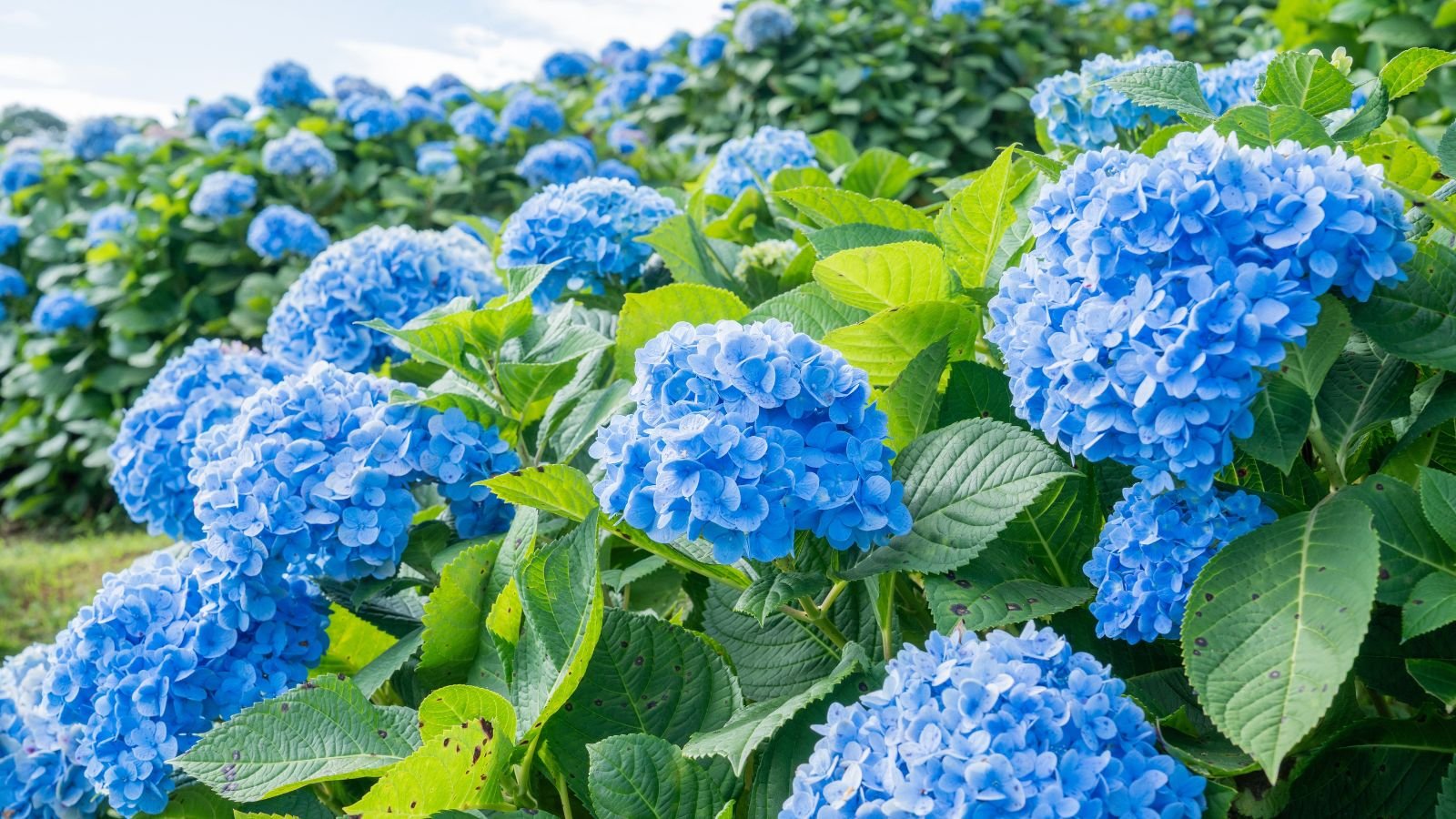
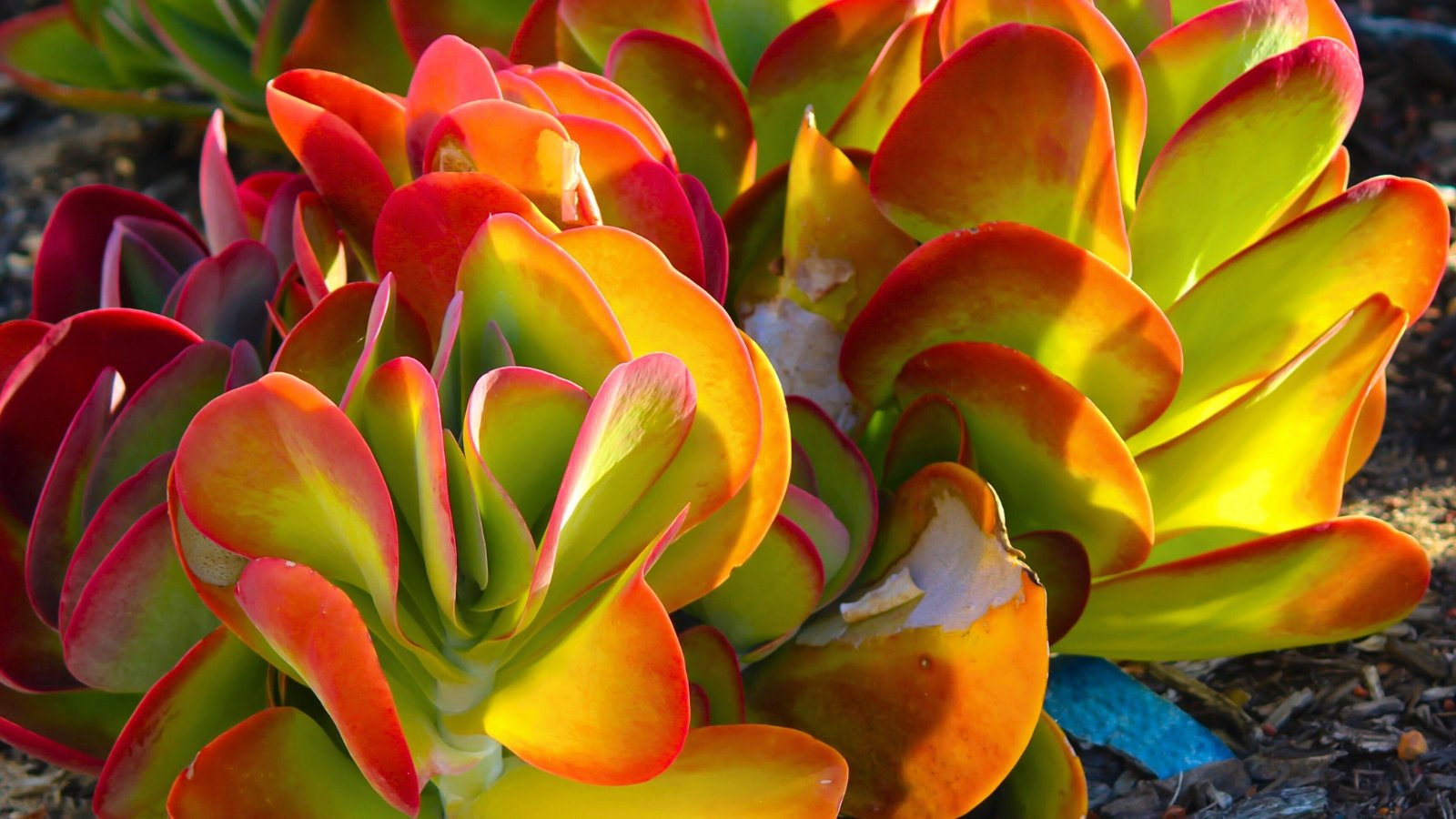
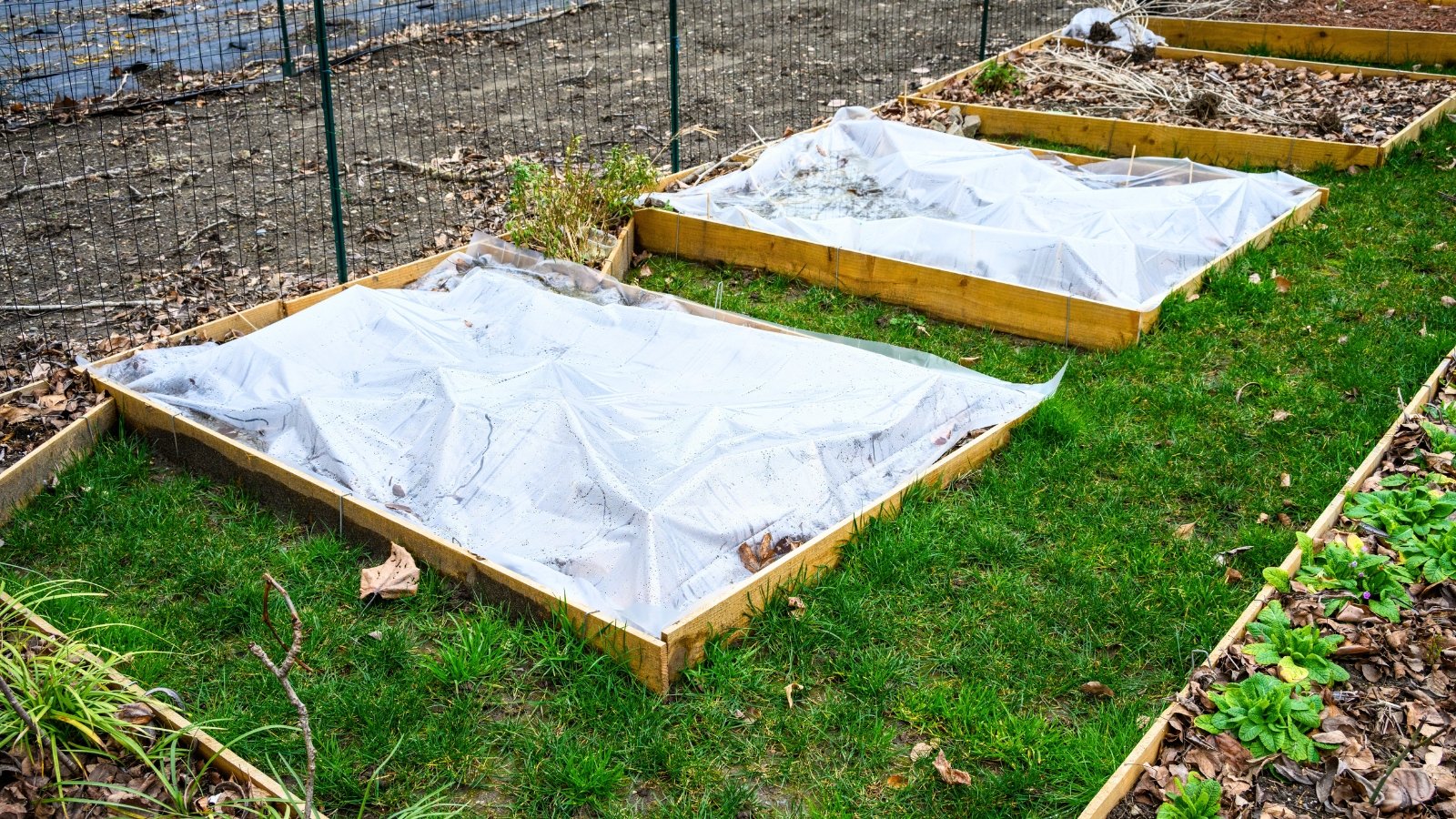
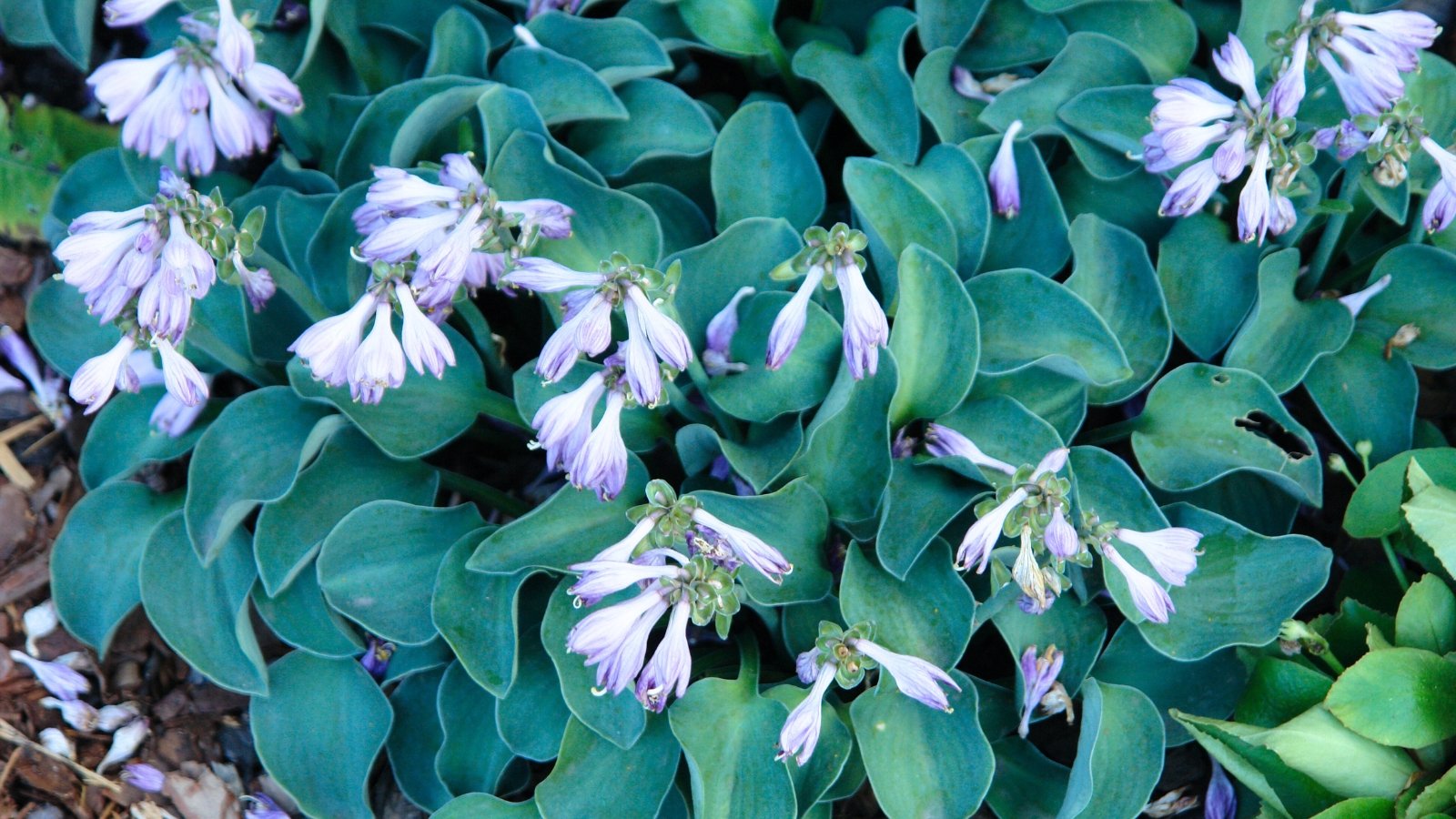
















 English (US) ·
English (US) ·  French (CA) ·
French (CA) ·